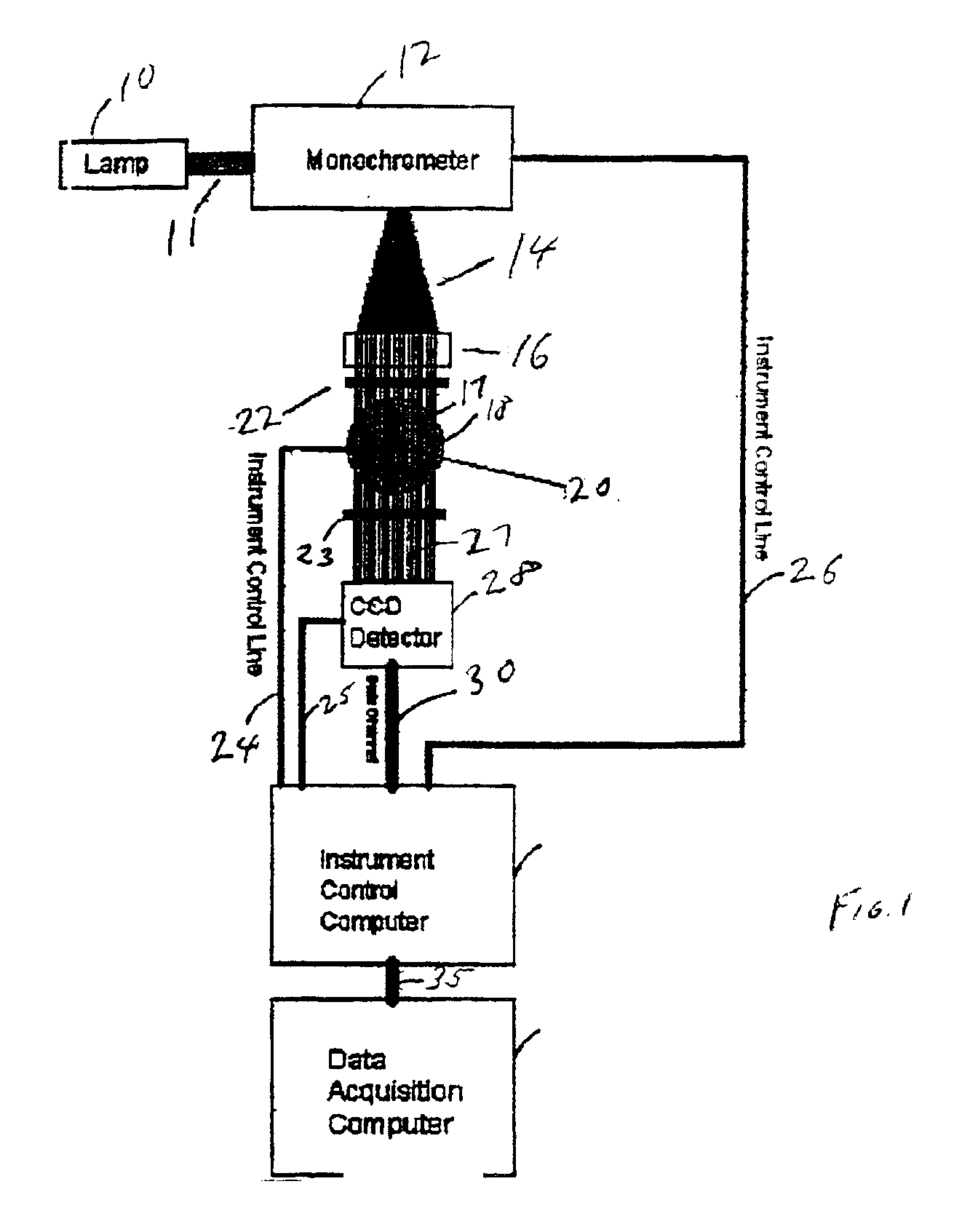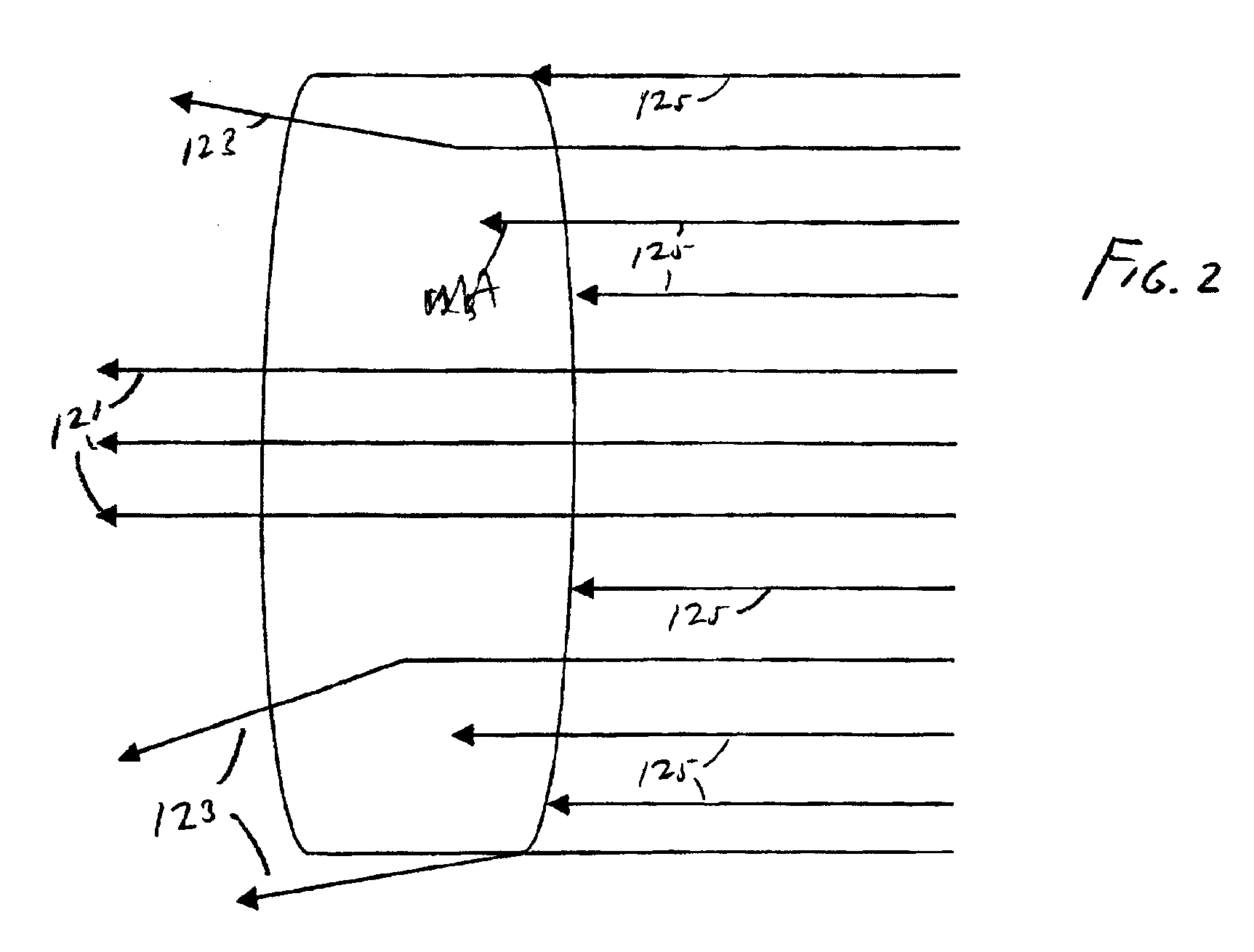Method and apparatus for three dimensional imaging using infrared radiation
a three-dimensional imaging and infrared radiation technology, applied in the field of three-dimensional (3d) tomography, can solve the problems of inability to directly integrate cone beam data with image reconstruction, inability to acquire 3d data sets a 2d slice at a time, and inability to achieve accurate and accurate image reconstruction results. , the effect of large and expensive cos
- Summary
- Abstract
- Description
- Claims
- Application Information
AI Technical Summary
Benefits of technology
Problems solved by technology
Method used
Image
Examples
Embodiment Construction
[0033]Referring to FIG. 1, there is shown an exemplary infrared tomography system according to the present invention. Preferably, the system is automated by a computer program residing on the control computer 32 operably connected to each component in the system by instrument control lines 24, 25 and 26. The control lines 24, 25 and 26 are constructed and arranged to allow for the exchange of digital information between the computer 32 and the system components to effect operation in a prescribed sequence at the direction of the program, and to transfer digital imaging information to the control computer 32 for storage on the data acquisition computer 34.
[0034]A lamp 10 provides a beam of light 11 to a monochrometer 12, which, in turn, projects monochromatic (one wavelength) radiation 14. As already discussed, a wide variety of monochrometers are suitable for generating the monochromatic radiation, including, for example, dispersive-type monochrometers and filter-type monochrometers...
PUM
| Property | Measurement | Unit |
|---|---|---|
| wavelength | aaaaa | aaaaa |
| wavelength | aaaaa | aaaaa |
| wavelength | aaaaa | aaaaa |
Abstract
Description
Claims
Application Information
 Login to View More
Login to View More - R&D
- Intellectual Property
- Life Sciences
- Materials
- Tech Scout
- Unparalleled Data Quality
- Higher Quality Content
- 60% Fewer Hallucinations
Browse by: Latest US Patents, China's latest patents, Technical Efficacy Thesaurus, Application Domain, Technology Topic, Popular Technical Reports.
© 2025 PatSnap. All rights reserved.Legal|Privacy policy|Modern Slavery Act Transparency Statement|Sitemap|About US| Contact US: help@patsnap.com



